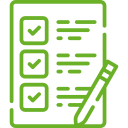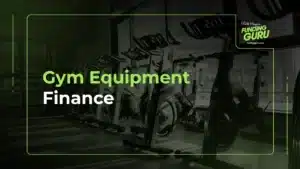Asset Finance Solutions Designed to Help Your Business Grow
Unlock the hidden value in your business assets.
Funding Guru’s Asset Financing helps you access the equipment you need or release cash tied up in existing assets – giving your business the boost it needs to grow and stay ahead.
- Loan from £25k to £5 million +
- Trusted by 500+ UK business owners
- Same day decisions
- Bad credit accepted
- Flexible repayment terms
How Our Asset Financing Solutions Can Boost Your Business
There are countless ways that asset financing could help your business to thrive:
-
Acquire New Equipment Or Technology:
Is your business hardware stuck in the 00’s? Using asset financing to purchase new equipment for things like your restaurant or gym, with little upfront cost can bring your business into the modern day. -
Smooth Out Operations:
Using the capital you release from your assets to bolster your operations is a great way to future-proof your business. -
Cash Injection to Cover a Low Period:
It happens. Use the capital you gain from your assets to tide you over until business as usual resumes. -
Invest in New Hires:
Build out your A-team to bring your business to the next level. -
Seizing a Business Opportunity:
Sometimes the right opportunities can come at the wrong time. But that doesn’t mean you have to sit on your hands. Releasing the value of your assets means you don’t have to let a golden goose pass you by.
Key Features of Our Asset Finance Solutions
Need a new piece of machinery to boost your operations? How about releasing some cash to drive business growth? Our flexible asset financing solutions are tailored to your business’ needs, and have the following great features:
Diverse Asset Coverage
From vehicles and machinery to lighting and technology, each piece of equipment that your business owns or needs will have a value that will enable you to explore financing options with Funding Guru.
Personalised Loan Terms
Every business is different, so why shouldn’t your loan be? We tailor your repayment plans to align with your business’s cash flow and financial objectives.
Unlocking Untapped Capital
Every asset in your business has the potential to unlock possibilities. Use the equity in your business assets to access funds for expansion, upgrades, or working capital.
What is Asset Finance?
Asset Finance is a type of secured loan that helps businesses to use their valuable assets for financial growth.
By securing funds against existing assets, from vehicles to equipment, businesses can unlock the potential value of these items to provide capital. for expansion, upgrades, or working capital needs.
Our Quick Application Process for Asset Finance

1. Fast Asset Assessment
You provide details about the assets you want to finance - we’ll evaluate them and let you know our thoughts.

2. Customised Proposal
You’ll receive a tailored financing proposal from us, so you can understand your financing and repayment options.

3. Average 24hr Approvals
We won’t leave you hanging. Our approval process usually takes 24 hours, allowing you to access funds right away.

4. Unlock Cash and Opportunity
Access funds in as little as 48 hours to upgrade, expand, or optimise your business — fast.
Differences Between Secured vs. Unsecured Loans
Secured loans are tied to your collateral (property, stock, machinery) where unsecured loans are evaluated on business financials and credit scores. Secured loans are seen as less risky for lenders, so they benefit from lower interest rates and longer repayment terms than unsecured.
Read our in-depth discussion of the key differences between unsecured and secured loans in our blog.
Asset Finance Solutions That Can Transform Your Business
Funding Guru offers a variety of asset financing options to level-up your business. Explore our most popular loan types below:
-
Lease Purchase:
Offers the customer the use (but not the ownership) of an asset through a regular rental payment but it is often more expensive than a hire purchase. In a fast-paced technology environment this can be a good option for ensuring equipment or machinery is constantly up to date. The benefit of this is that it allows a business to use the asset and ensure that the payments are totally offset against its profits, making it highly tax efficient. Depending on business income it can relieve pressure on cash flow in the company. Leasing can also be flexible and there is no capital outlay required.
Leasing can come in two forms; a finance lease and an operating lease.
Finance lease – will enable a company to take on all the rights and obligations of ownership – in terms of ownership and insurance – during the course of the lease. This means that during the period of the agreement, the customer will have paid almost all the value of the asset during the contract period effectively owning it outright at the end.
Operating lease – when a business cannot afford or does not need, to run a piece of equipment for its working life an operating lease can be used. At the end of the agreement, the asset finance company will take back the item having maintained it during its lifetime. -
Hire Purchase:
We’ll purchase the equipment you want on your behalf, and you’ll repay us over an agreed term. You’ll gain ownership of the assets you want once the agreement is over. Ideal for small businesses that don’t have the liquid capital for asset acquisition. Without upfront costs, your business has the flexibility to make strategic decisions while you acquire your assets over time with fixed monthly payments. -
Asset Refinancing:
Allows a business to unlock capital already held in assets. It is effective in ensuring a business that needs additional cash flow – rather than new equipment, plant or machinery – gets to unlock much-needed finance. Refinancing involves a finance company loaning an amount secured against assets owned by the business. Repayments are made on a monthly basis in affordable instalments, and as long as you stick to the payment schedule you will retain use of your asset while still enjoying the extra capital. -
Sale and Leaseback:
Assets that are already owned by the business are purchased by a finance company at an agreed value and then leased back to the company, in much the same way as a hire purchase agreement. It is a popular form of raising finance for established companies that already own a lot of unencumbered assets. The benefits of this are an immediate cash injection and often reduced monthly overheads too. -
Pension backed funding:
Using your personal pension can be a fourth route to asset financing, one which can be effectively completed through a well-run pension scheme. By combining pension funds, business owners can create an SSAS (Small Self Administered Scheme) or SIPP (Self-Invested Personal Pension). With this they can, assuming all qualifying criteria are met, make a loan-back to the business and in doing so provide a cash injection with which they can use to purchase plant, machinery and technology, or to just inject into the company as ready funds. All of which can be secured against existing assets. Although this is an area of funding that will need strong professional advice.

Founder and CEO, Funding Guru
Matt’s Thoughts on Asset Financing
“Asset finance can offer your business a cash injection when you most need it. It is often a great option for new companies that have no trading history but can show financial strength through asset ownership and for those without the deep pockets required to purchase large machinery or expensive equipment. Contact us today to see how asset finance can be used to help your company grow or branch into new areas.”
How Much Can I Borrow through Asset Finance?
The amount that you can borrow through asset finance is tailored to your needs and your portfolio. At Funding Guru, we typically allow businesses to borrow from £25,000 to £500,000 over a period of 12 months to four years.
As opposed to traditional banks, we usually provide funding decisions within 24 hours, so you don’t have to wait while opportunity passes you by. Once approved, funds can be directed to your supplier or deposited into your account within two business days.
Benefits of Asset Finance for Your Business
Aside from the obvious cash injection and financial flexibility that comes from asset finance for businesses, there are a host of additional wins:
-
No Personal Collateral:
Unlike other business loans, when acquiring new equipment through asset finance, the asset acts as collateral for the loan amount, so you don’t have to put any additional business assets on the line. -
Tax Benefits:
Let’s say you’re a car hire company wanting to acquire twenty new cars to expand your fleet. Those twenty motors are business expenses, and can be deducted from your total taxable profits. Even better if they’re electric, as you can gain up to 100% tax relief in the UK. -
Maximise the Value of Your Existing Assets:
When you refinance your existing assets, you gain another bunch of capital from them whilst you’re still using them for your business (and they’re still making you money!)
Why Choose Us
Asset financing is a type of secured business loan. Both raise capital for your business quickly by using assets as collateral. Let’s say you need to raise £100,000 for your business, and you have a bit of kit that is worth that value. Here are some examples of how asset refinancing or secured business loans could help.
For a secured business loan, you would borrow the money from a lender using the asset (machine/ vehicle/ etc) as collateral for the loan. If you default on the loan payments, the asset you used as collateral may be claimed by the lender. You have more flexibility on the amount that you borrow, but you’ll have to put up a proportional amount of collateral.
Opting for the asset financing route could be a more attractive option if you’re looking for flexible financing with no upfront costs. Your lender would loan the value of the asset and you would pay back the loan in monthly instalments. This is great for those looking to finance new assets – the lender uses the asset you’re wanting to purchase as the collateral against itself rather than other assets in your business.
Why Choose Us for Asset Financing
When it comes to asset financing, the right partner makes all the difference. At Funding Guru, we combine tailored solutions, clear communication, and decades of experience to deliver finance that works for your business – simple, strategic, and built for growth.
-
Tailored Solutions:
There’s no one-size-fits-all in business. We believe in personalised and flexible financing solutions that are designed to meet your business’ unique needs and challenges. -
Always Transparent Approach:
Finance without the jargon. We offer transparency at every step of your financing journey, so you’re not in the dark about the decisions you’re making. Having confidence in your financial decisions is key to any successful business. -
A Track-Record of Proven Success Stories:
When you opt for asset finance with us, you’ll join a community of thriving businesses that have achieved success with Funding Guru's financial expertise and support. -
Tap into Our Industry Experience:
With decades of industry experience, we understand business. We partner with our clients to provide you with insights and guidance to navigate the complexities of business finance, because when you do well, we do well. -
Efficiency and Simplicity:
Our streamlined process takes the anxiety out of business finance, allowing you to focus on what matters - growing your business.
Testimonials
Asset Financing Frequently Asked Questions
How does asset financing work?
Asset financing works by allowing businesses to use the asset they are purchasing as collateral for the loan. This means that the lender has security in the asset itself. Depending on the agreement, you can either lease the asset with the option to buy it at the end of the term, or you can finance the purchase outright with the loan being repaid over a fixed period.
Can I still apply for asset finance with bad credit?
In short, yes! You may need to provide your lender with more proof of your business feasibility, and show you can keep up with the loan repayments, but as asset finance uses the asset as collateral for the loan, it can be a good option for those with low credit.
Can my assets be repossessed with asset finance?
If you default on the loan repayments, yes. Asset financing is essentially a way of spreading out the cost of a new asset, but as with any loan, if you default on the payment, the asset can be taken away from you.
Is asset finance suitable for small businesses?
Yes, asset finance is an excellent option for small businesses. It helps small businesses acquire essential assets without a significant upfront investment, thus supporting growth and operational efficiency. Business asset finance can be tailored to meet the specific needs and cash flow of smaller enterprises.
How does hire purchase differ from lease purchase?
In a hire purchase agreement, you make payments towards owning the asset, and ownership transfers to you at the end of the term. In a lease purchase, you lease the asset and have the option to purchase it at the end of the lease period. Lease purchase typically involves lower monthly payments but requires a final lump sum if you decide to buy the asset.
Can I upgrade or return the asset at the end of a lease purchase agreement?
At the end of a lease purchase agreement, you typically have the option to buy the asset, return it, or upgrade to a newer model. This flexibility makes lease purchase agreements a popular choice for businesses that need to stay current with technology and equipment.
Why should I choose Funding Guru for my asset finance needs?
By partnering with Funding Guru for your asset finance needs, you’re partnering with a team dedicated to understanding and supporting your business. We offer tailored asset finance solutions with competitive rates and flexible terms.
How can I apply for asset finance with Funding Guru?
Applying for asset finance with Funding Guru is straightforward. Simply fill out the form or give us a call. Our team will review your inquiry and work with you to find the best asset finance solution for your needs.
Read Our Latest Asset Finance Articles

Gym Equipment Finance: Get Flexible Funding for Your Gym
Discover flexible gym equipment finance options with Funding Guru. Spread costs, boost cash flow, and grow your fitness business with ease.

Understanding the Risks and Rewards of Using Personal Assets as Collateral for Business Loans
Explore the implications of using personal assets for loans and investments. Understand the balance between risk and reward today!

How Asset Finance Solutions Support Sustainable Business Practices
Find out how asset finance solutions can support sustainable business growth with affordable investments in green technologies.

The Process of Refinancing Existing Assets Through Asset Finance
Learn why refinancing existing assets to free up funds is a simple and smart funding option for businesses of all sizes.
Does Your Business Require a Secured Loan?

